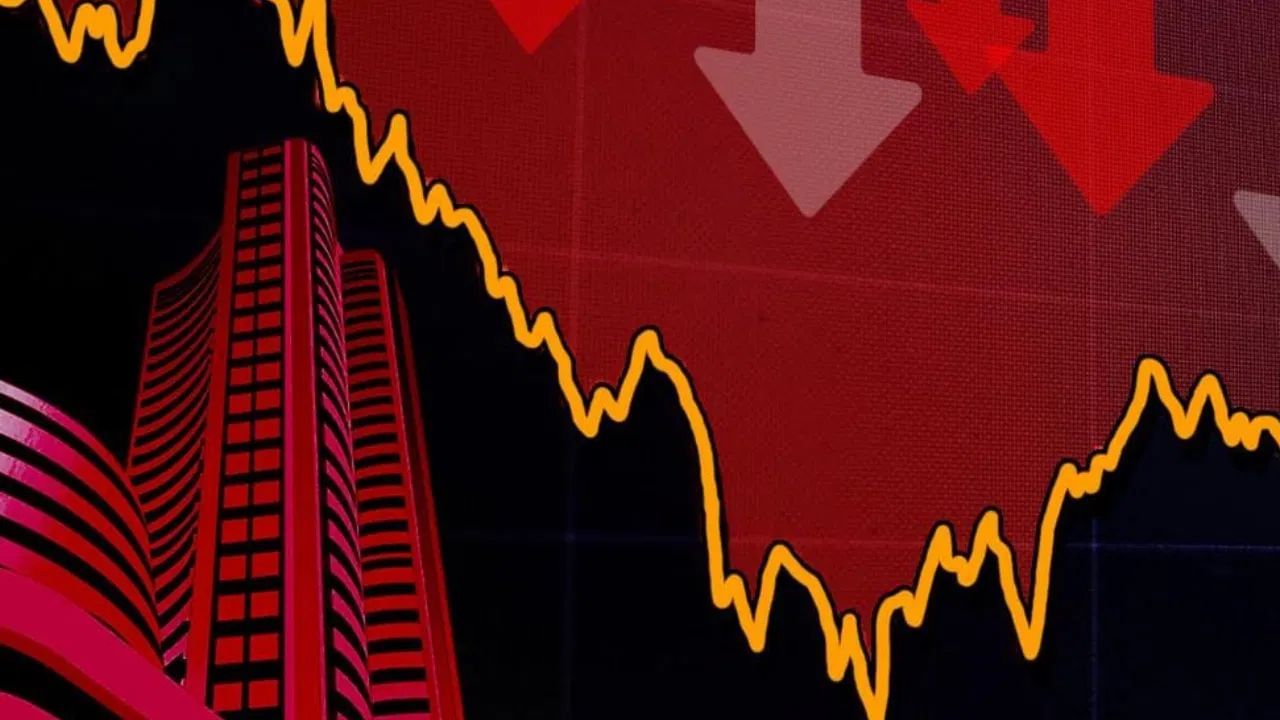There is a decline in the stock market for the third consecutive day.
The stock market has seen a decline for the third consecutive day. The stock market has suffered huge losses in about 19 hours of trading sessions in these three days. If we look at the data, there has been a decline of more than 750 points in Sensex. On the other hand, Nifty has seen a decline of 271 points.
If we talk about Friday, a fall of 640 points was seen in the Sensex. Nifty had fallen by more than 191 points. The special thing is that Sensex and Nifty recovered after that, but did not close on the green mark. However, in these three days, stock market investors have suffered a loss of more than Rs 6 lakh crore.
Now the biggest question is that in the month of October, Sensex saw a rise of more than 4 percent. Now who is turning that tables? Foreign investors are playing the biggest role in this decline. Which has once again started profit booking. On the other hand, the recent economic indicators data also do not seem to be supporting the stock market.
Apart from this, the trade between India and America has not been finalized yet. In such a situation, there is a feeling of uncertainty among investors. At the same time, the effect of decline in foreign stock markets is also being seen. Let us also tell you what kind of figures are being seen in Sensex and Nifty.
Stock market declined for the third consecutive day
Even though Bombay Stock Exchange’s main index Sensex closed with a slight fall on Friday, a fall of 762.21 points has been seen in three days. According to the data, when the stock market closed on November 3, the Sensex closed at 83,978.49 points. Which came down to 83,216.28 points on Friday. However, on Friday itself, the Sensex had fallen by 640.06 points to 82,670.95 points during the trading session and this three-day fall had increased to more than 1,300 points. But recovery was seen in Sensex and Sensex closed with a fall of 94.73 points.
On the other hand, Nifty has also seen a continuous decline for three consecutive days. First, if we talk about Friday, Nifty closed at 25,492.30 points with a fall of 17.40 points. Whereas during the trading session it fell by 191.25 points and reached the lower level of 25,318.45 points. If we talk about three consecutive days, a fall of 271.05 points has been seen in Nifty. On November 3, Nifty closed at 25,763.35 points.
Why is the stock market declining?
Global market decline: Weakness in foreign markets is one of the major reasons for the recent selloff in the Indian stock market. At the global level, there has been a change in sentiment regarding the increased valuation of Wall Street. On November 7, major Asian stock markets fell sharply, with Japan’s Nikkei and Korea’s Kospi falling 2 percent each, while Wall Street fell as much as 2 percent overnight. Investors are now looking for new reasons amid diminishing prospects of another cut in interest rates by the US Federal Reserve, while the US government shutdown, which began on October 1 and is now the longest in history, is creating a lack of economic data and a sense of uncertainty in the market.
The position of tech and commodity companies weakened: The rise in global markets this year has been largely driven by technology companies, driven by strong optimism about AI. There is a lack of strong global companies in this sector in India. Experts say that this is one reason why Indian stock markets have performed poorly so far this year. Shankar Sharma, leading investor and founder of AI-tech company GQuant, said that at the global level, two sectors – technology and commodities – are driving this boom. There are not many strong names in these fields in India. This is one reason why we are performing poorly.
Economic Indicators: Due to low inflation, India’s gross domestic product (GDP) grew at an impressive growth rate of 7.8 percent in the first quarter of the current financial year (Q1FY26). However, the growth rate of nominal GDP declined to 8.8 percent in the first quarter of FY 2026, whereas it was 9.6 percent in the same period of the last financial year. This shows that there is still some weakness in the economy. Concerns about the Indian economy are limiting the market’s growth. Meanwhile, after reaching a 15-year peak in August, India’s services sector fell to a 5-month low in October. Gross domestic product figures for the second quarter of fiscal year 2026 are scheduled to be released on November 28.
Continuous selling by foreign investors: Foreign institutional investors (FIIs) continued to sell Indian stocks amid mixed earnings, fluctuations in the Indian rupee and subdued expectations of further interest rate cuts by the US Fed. So far in November, FIIs have sold Indian stocks worth Rs 6,214 crore. They have been selling Indian shares since July this year and in total have sold about Rs 1.4 lakh crore in the cash segment.
Uncertainty remains on India-US trade deal: Despite several positive signs and the apparent cordiality between Prime Minister Narendra Modi and US President Donald Trump, uncertainty over a potential India-US trade deal remains a major headwind for the Indian stock market. On Thursday, Trump said that talks with Prime Minister Modi on India-US trade agreement are progressing well and he may visit America next year.
